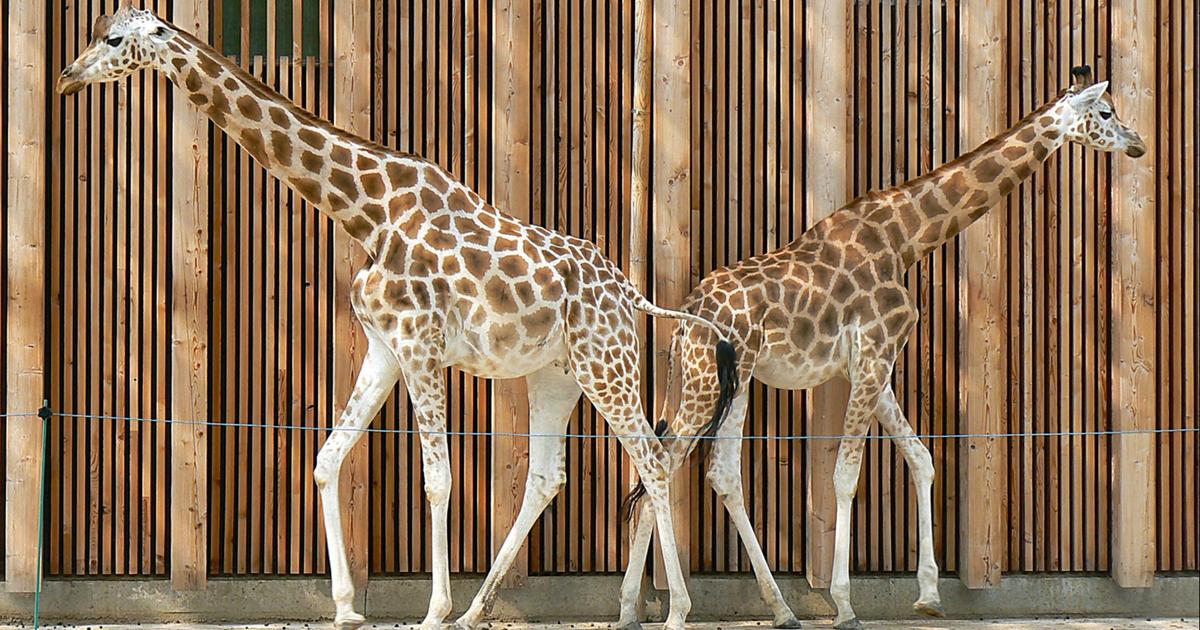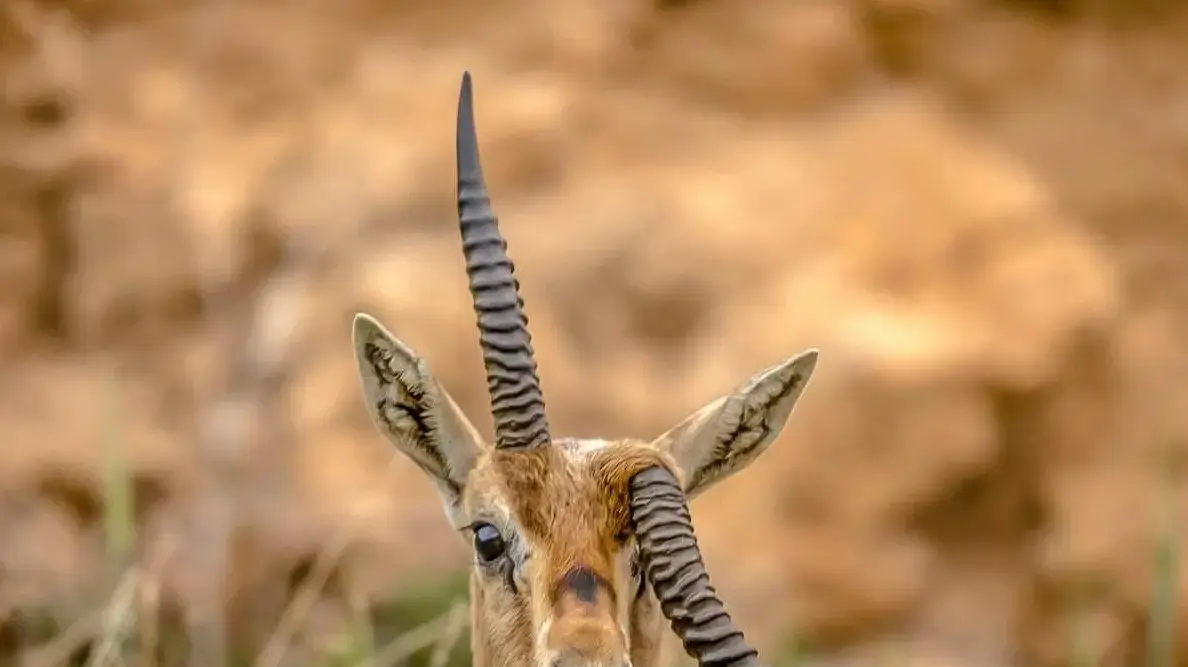American zoologist Bruce Young acknowledges that it has been difficult for him to find funding to complete this research.
Because the protagonists of this great study that has been published this Wednesday in
Nature
After 15 years of work and the collaboration of 961 scientists from 24 countries, they do not usually appear on the list of the most popular animals.
"Reptiles are less charismatic than mammals or birds," admits Young resignedly.
They even arouse fear and for millennia have starred in the most monstrous mythological tales.
"There's not much love for snakes," he admits.
And this has contributed, in his opinion, to the fact that until now there was a vacuum about the degree of global threat to which this group of vertebrate animals is subjected.
The work published this Wednesday, co-directed by Young and with the participation of the International Union for Conservation of Nature (IUCN), concludes that 21.1% of the 10,196 species of reptiles evaluated —close to 11 .
“This is the first time this analysis has been done in the world.
For birds it was carried out in the 1990s, for amphibians in 2003 and for mammals in 2008, but there was great doubt as to what was happening with reptiles," explains this zoologist, a member of the the non-governmental organization NatureServe.
And the main conclusion is that the degree of threat to which reptiles are subjected is even above that of birds, which is 13.6%.
In the case of mammals, 25.4% are at risk.
The worst situation is that of amphibians: 40.7% of these species are in danger of disappearing.
Two Schmidt's lizards ('Acanthodactylus schmidti') copulating.Johannes Els
Cape Cobra ('Naja nivea').Johannes Els
Blue-tailed Ameiva ('Pholidoscelis taeniurus').S.
Blair Hedges/Center for Biodiversity at Temple University
Tokay gecko ('Gekko gecko').Mark Auliya/TRAFFIC SE-Asia
Sri Lankan green python viper ('Craspedocephalus trigonocephalus').Johannes Els
Natterer's Gecko ('Tropiocolotes nattereri').Alex Slavenko
Lizard of the Liolaemidae family ('Liolaemus gununakuna').Ignacio Roberto Hernández
Taking a blood sample from a Cuban iguana ('Cyclura nubila'). Tandora Grant
Armadillo lizard ('Ouroborus cataphractus').Johannes Els
Socotran chameleon ('Chamaeleo monachus').Johannes Els
A researcher photographs a snake.LJ Avila/Patagonian Herpetology Group
Saltmarsh crocodile ('Crocodylus palustris').Johannes Els
Snake belonging to the Lamprophiidae family ('Ditypophis vivax').Johannes Els
Jamaican Iguana ('Cyclura collei'). Joey Markx, International Iguana
Komodo dragon ('Varanus komodoensis').
Johannes Els
Madagascar star tortoise ('Astrochelys radiata').Anders GJ Rhodin, Chelonian Re
Zarudny's Worm Lizard ('Diplometopon zarudnyi').Johannes Els
Rhinoceros horned lizard ('Ceratophora stoddartii').Consultant Herpetologist, Sri La
Argentine coral ('Micrurus pyrrhocryptus'). Ignacio Hernandez
Lizard of the family Agamidae ('Uromaxtyx aegyptia leptieni').Johannes Els
South American tagged gecko ('Homonota horrida'). Ignacio Hernandez
Gavial ('Gavialis gangeticus').Johannes Els
Striped Bronze Snake ('Dendrelaphis caudolineatus').Johannes Els
Sand fish ('Scincus scincus').Alex Slavenko
But not all reptiles are subjected to the same degree of pressure: 57.9% of the turtles and 50% of the crocodiles on the planet are at risk.
To assess its status, scientists have used the criteria used by the IUCN for its red list, which classifies this threat of extinction as vulnerable, endangered and critically endangered.
To find the main threat, you only have to look at a mammal: the human being.
Young lists the causes that put one in five species of this type of vertebrate in check: deforestation, the expansion of urban areas, the transformation of land to increase agricultural or livestock area, invasive species introduced by man ... "And in the case of turtles and crocodiles, the main threat is hunting," he adds.
Climate change is also emerging as a potential threat to reptiles, for example by skewing the male-to-female ratios of offspring of species whose sex depends on the temperatures to which the eggs are exposed, as in the case of some turtles.
But the researchers acknowledge that it is difficult to assess the impacts because in many cases they are long-term.
“There are some species for which climate change is already a threat.
For others, however, it is longer term, such as those that inhabit islands threatened by rising sea levels,” explains Young.
Regarding their geographical distribution, the study, in which the organization Conservation International has also participated, indicates that the threatened reptiles are concentrated in Southeast Asia, West Africa, northern Madagascar, northern Andes and the Caribbean;
the Kalahari, Karoo and Sahara deserts;
northern Eurasia;
and the Rocky Mountains and northern North America.
And it is concluded that 30% of the reptiles that live in forested areas are at risk of extinction, compared to 14% of those living in arid habitats.
Curiously, this situation can help avoid the risk of disappearance of many of the threatened reptiles, since efforts to preserve more popular species of birds and mammals that depend on forest ecosystems can in turn help protect reptiles. .
In fact, this is another of the conclusions reached by researchers.
“The great efforts to protect the best known animals have probably also contributed to protecting many reptiles.
Habitat protection is essential to buffer reptiles, as well as other vertebrates, from threats such as agricultural activities and urban development,” adds Young.
But the study authors caution that urgent and targeted conservation measures are still needed to protect some of the most endangered reptile species, such as endemic island lizards that are at risk from invasive mammals introduced by humans and by deforestation.
“Reptiles aren't often used to inspire conservation action, but they are fascinating creatures and play indispensable roles in ecosystems around the planet.
We all benefit from its role in pest control and serving as food for birds and other animals,” says Sean T. O'Brien, president of NatureServe.
Among the conservation strategies that are considered most important to prevent the extinction of reptiles, the study emphasizes increasing protected areas on the planet, which can stop deforestation and soil transformation.
"The hundreds of threatened reptiles currently found entirely outside protected areas underscore the need for important site-specific safeguards," concludes the study published in
Nature
.
The need to fight against invasive species introduced by humans is also pointed out: “The mammals introduced to the islands threaten 257 species of reptiles (2.8% of all reptiles), which requires continuous campaigns to eradicate them. introduced mammals in those places.
The authors acknowledge that efforts to conserve amphibians and mammals can benefit the 1,829 threatened reptiles, "especially forest-dwelling species," but insist that conservation investments targeting reptiles in particular must also be activated.
"Our responsibility is to leave future generations with a planet equal to or better than the one we are living on," concludes Miguel Fernández, a postdoctoral researcher at the German Center for Integrative Biodiversity Research (iDiv) and another of the main authors of this study. study.
You can follow CLIMA Y MEDIO AMBIENTE on
and
, or sign up here to receive
our weekly newsletter






/cloudfront-eu-central-1.images.arcpublishing.com/prisa/BCB6MJLFNJFHTOKKFRCSCPHTFQ.jpg)

